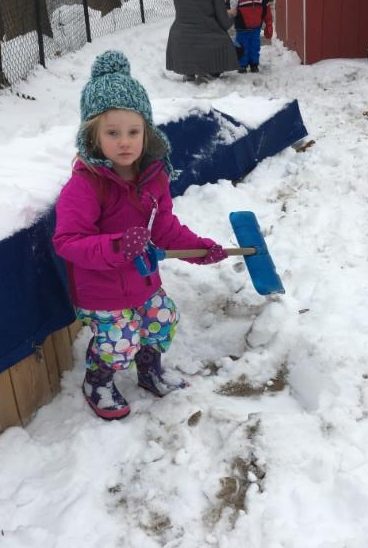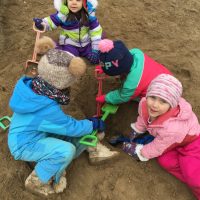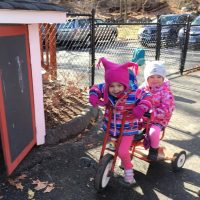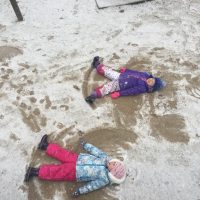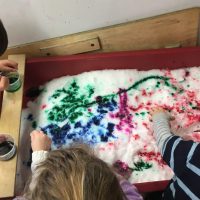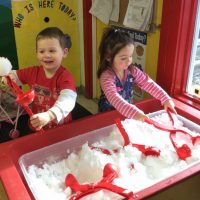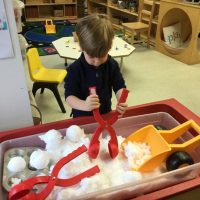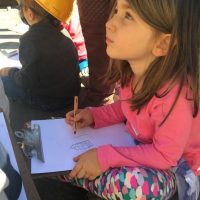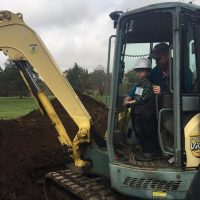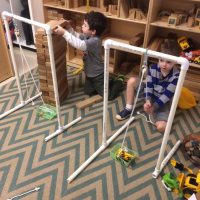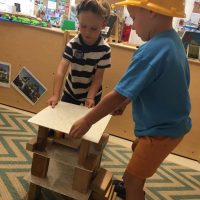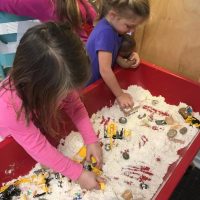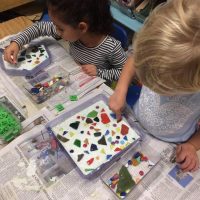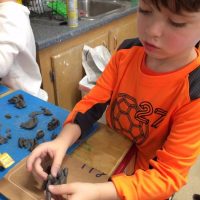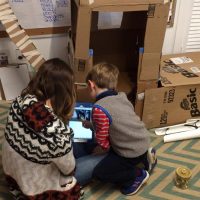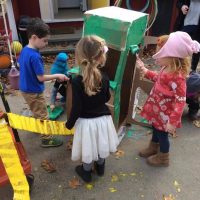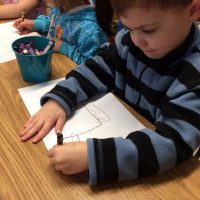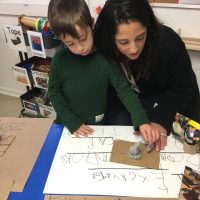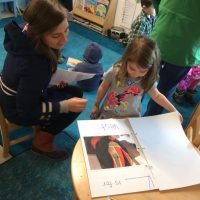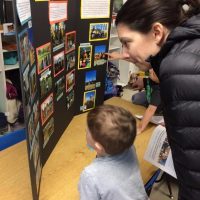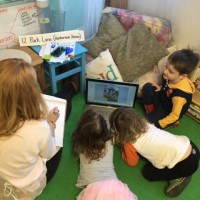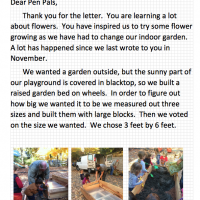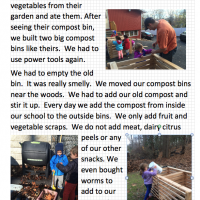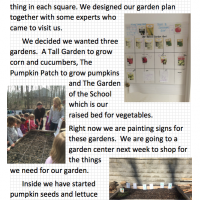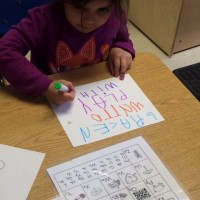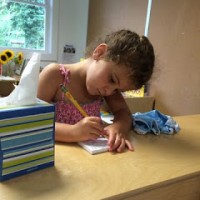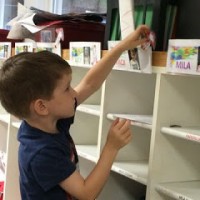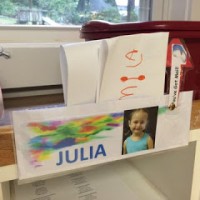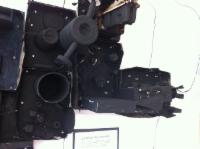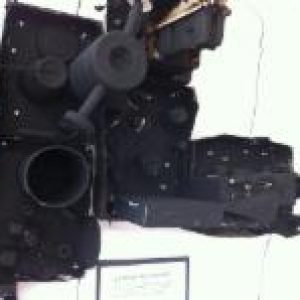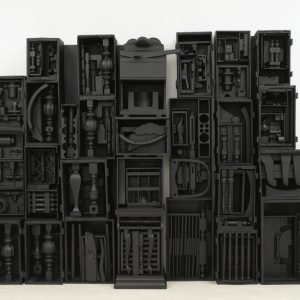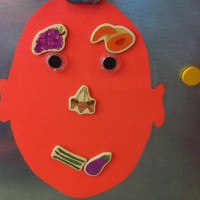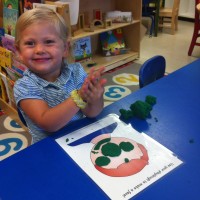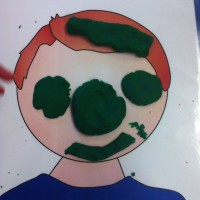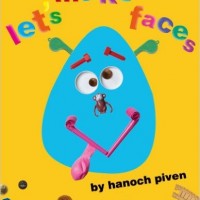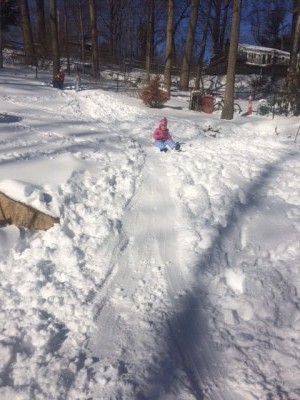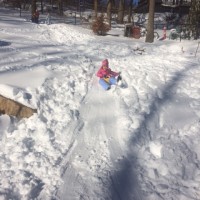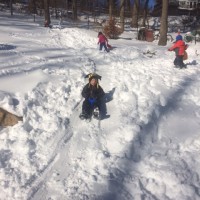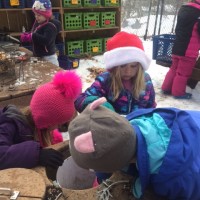One of the most exciting things about each new class, and something that sets CCNS apart, is how the wonderings of a diverse group of children develop into the year’s first Project Approach study. During the first weeks of school, the children interact with a wide range of stimulus and provocations. We observe, question, tweak and expand what’s on offer, looking for a common interest that sparks the children’s curiosity.
This Fall, the children were busy building structures in the block center and lining up for the workbench– perennially popular activities in the CCNS Fours. But this group seemed especially engaged when working with toy construction tools, playing with construction vehicles and building structures with loose parts on the playground. They were asking questions about how things are built and were especially curious about the tools, materials, jobs, sites and vehicles involved.
They had questions. They wanted answers. And we… had our first Project: Building & Construction.
As in any Project Approach study, the first task was to develop an investigation plan to explore the topic. The children listed their (many!) questions, and we brainstormed ways to find the answers. Their plan included research using books and videos, inviting “experts’ into the classroom, creating their own construction vehicles and making field site-visits to see construction in progress and construction vehicles at work. We added ways for the children to document their learning and report on their findings. Using the Project Approach like this in our curriculum is so valuable because the topic holds the children’s interest for months, and working through the investigation plan builds real world skills that will be used from elementary school to high school and beyond.
Our first field site-visit was to a construction site to interview an expert in the field. The children were very excited to be able to ask their questions and see some of the equipment that they had been reading about in action. We took photographs and made field sketches to help with our research and document our experience. On our second field site-visit, we saw the inside of a building being built, a tree being chopped down and chipped, a stump being ground and several different lawn mowers and trucks. The highlights of the trip were receiving our very own hard hat (to keep!) and actually using the controls of an excavator to scoop dirt and bring it to a dump truck!
On our final field site-visit, we learned all about the process of making concrete from Devine Brothers. We saw several vehicles up close, and our class was even featured on News12 Connecticut talking about this study and our visit.
Thanks to all the construction experts who created such amazing hands-on experiences that the children will be talking about for years. And what a testament to our amazing CCNS community that two of the three field visits were organized by CCNS dads who do not even have a child in this current Fours class!
Once the Construction Project was underway, the children enjoyed new stimulus that was added to the classroom for free-play exploration- construction vehicles, cones, signs, pipes and connectors in the block area plus pulleys and levers to explore our budding engineering skills. There was a moon sand construction site in the sensory table and foam blocks being mortared together with shaving foam at the art table.
With all this talk about building, the children wanted to build something themselves. They were able to make stepping stones from one of the ingredients in concrete: cement. The kids enjoyed watching the cement go from a powder, to a liquid and then to a solid as it cured. They decorated the stones with mosaic tiles and created an individual keepsake of their learning that was, literally, set in stone.
And no construction vehicle captured the children’s attention more than the excavator, so naturally they wanted to make one. Initially, the kids asked to make small excavators out of clay. They learned several clay techniques, and it was amazing to see the fine details that so many of the children represented in their pieces.
Finally the children used their research and field site-visit photos to build a big excavator together. It was incredibly realistic, with moving parts, and the children voted to paint it to match the one they actually operated on their field site-visit.
The kids further documented this Project by creating a class alphabet book using their research and photographs from their trips. Finally, family and friends were invited into the classroom to learn more about building and tour the celebration of our construction project work.
We thoroughly enjoyed this Project – and the best part was building the children’s confidence and pride in their deep knowledge of all things “building and construction”!

